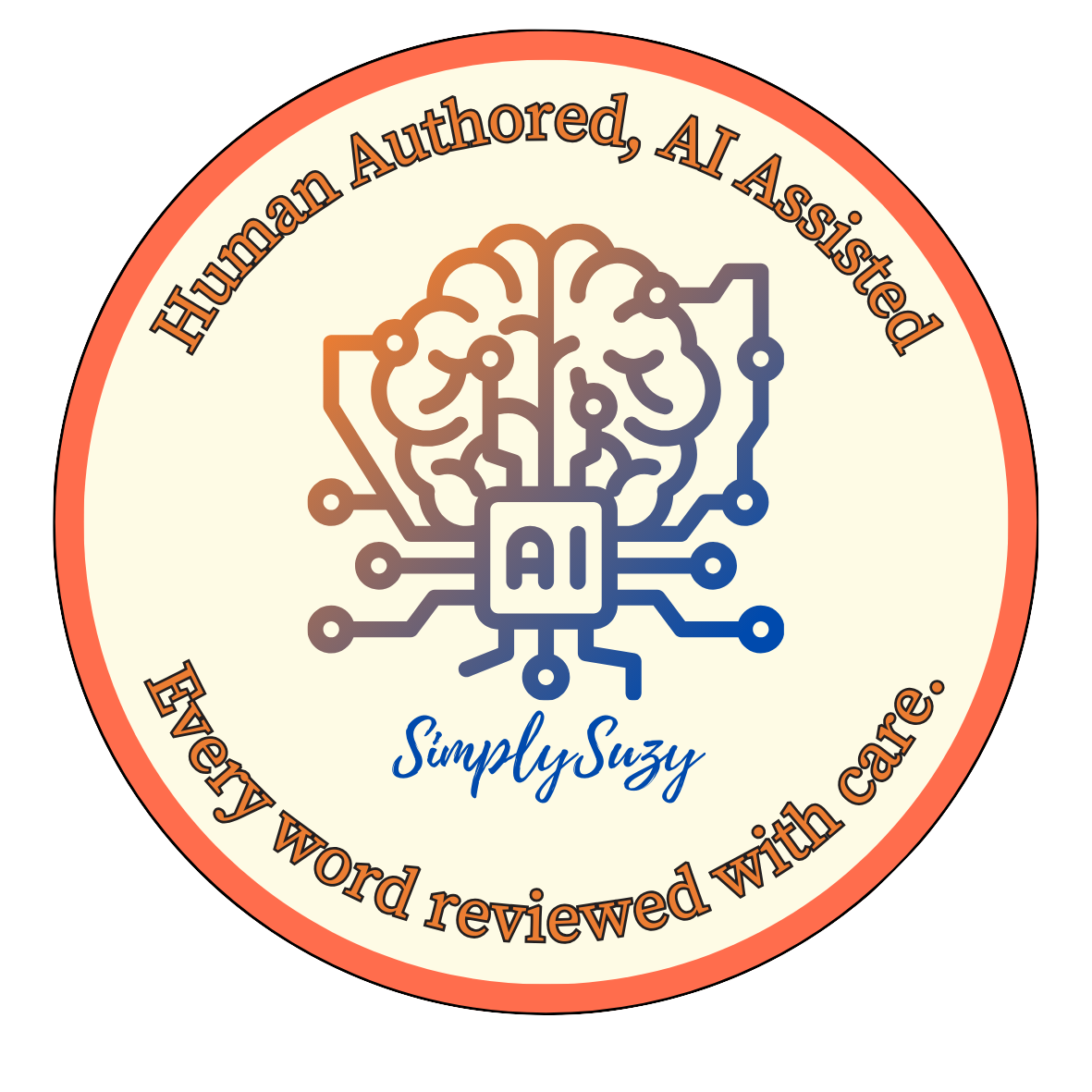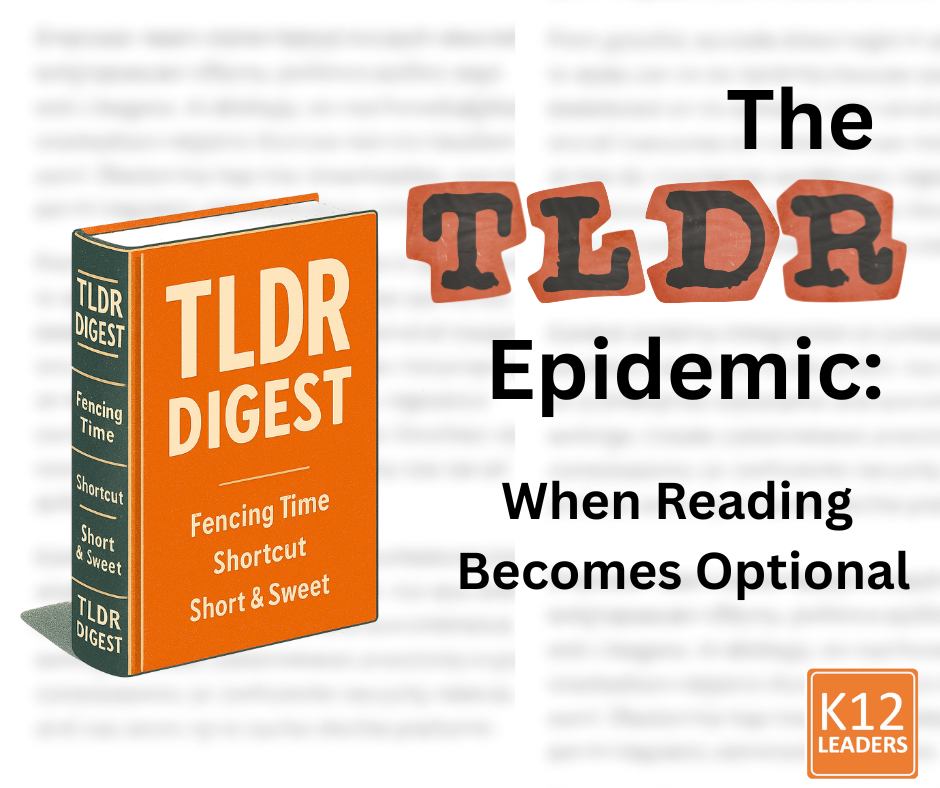The TLDR Epidemic: When Reading Becomes Optional
TLDR: We’re drowning in words but starving for attention. And it’s not just a personal shift. It’s a cultural one.
Once upon a time, I read everything. Cereal boxes. Junk mail. The fine print on shampoo bottles. I inhaled books like oxygen. But six years ago, a series of strokes changed everything, damaging my optic nerve and my brain. I’m left with blind spots, eye fatigue, convergence issues, and a new relationship with the written word. I now rely on prismatic glasses and audiobooks to keep pace with the stories I still crave. Unfortunately, I just can’t read as much as I used to.
Even as I adapted, I noticed something bigger happening around me: a burgeoning “Skimming Society” where people were reading less as well.
Welcome to the TLDR Epidemic.
Where TL;DR Came From and Why It Stuck
The acronym TL;DR (Too Long; Didn’t Read) first surfaced in early 2000s internet forums like Something Awful and 4Chan. It was shorthand for a summary either offered by the writer or demanded by the reader. By 2018, Merriam-Webster had officially added it to the dictionary. TLDR wasn’t just slang anymore; it was a cultural signal.
But TLDR isn’t just about brevity. It’s about bandwidth. A 2017 Reddit study found that 73% of users voted on articles without reading them just based on the headline. Whether it’s laziness or cognitive fatigue, we’ve trained ourselves to skim, scroll, and summarize. TLDR is no longer a shortcut it’s a coping mechanism.
Skimming as Survival and Its Consequences
Maryanne Wolf, a leading neuroscientist of reading, warns that screen-based skim-reading is eroding our capacity for deep comprehension and empathy. We’re losing the ability to “look back,” to re-examine, to sit with complexity. Instead, we sprint through content, forming opinions based on headlines and summaries. As one writer put it, “The screen becomes a great equalizer of informational sources” where a New Yorker piece is skimmed like a sports blog or a friend’s Facebook post.
This isn’t just about reading. It’s about thinking.
Content Inflation: The TLDR Fuel
Since the rise of AI co-pilots and large language models, the volume of published content has exploded. According to a Copyleaks study, AI-generated content on the web surged by 8,362% between November 2022 and March 2024. That’s not a typo; it’s a tsunami.
This explosion is driven by:
- Advances in natural language processing
- A demand for scalable, low-cost content
- The rise of AI tools that help users churn out blog posts, emails, and articles with minimal effort (the irony is not lost on me, here)
But more words don’t mean more engagement. According to Ahrefs:
- Clicks drop by 34.5% when AI summaries appear in search results
- 70% of users never read past the first third of the summary
- Visitors from AI platforms bounce faster and view fewer pages than traditional search users
In short: we’re producing more content than ever, but reading less of it. TLDR isn’t just a reaction, it’s a consequence. To think we used to worry about Wikipedia dumbing-down our research… HA! Now we don’t even leave the Google results page to get the gist, do we?
Enter AI: More Words, Less Reading?
Artificial intelligence has supercharged the TLDR effect. Tools like BooksAI and NotebookLM don’t just summarize, they analyze, compare, and even generate discussion questions. Students can now “chat” with books instead of reading them. In higher ed, faculty are assigning less reading because students simply won’t do it.
AI co-pilots make it easier to churn out content like emails, essays and articles, all at scale. But is it being read? Or just skimmed for the TLDR?
Some readers are developing subtle cues to detect machine-generated text. One example is the “AI hyphen” (also known as the “em-dash”), a punctuation choice that now signals automation. For many, it’s become a subconscious filter: if the writing feels too polished, too patterned, or too punctuated, it’s easier to disengage. We’re developing a sixth sense for authenticity, and it’s reshaping how we consume content.
Perhaps we will see AI hyphen in a future copy of Merriam-Webster?
TLDR Is Not Just a Trend, It’s a Symptom
The TLDR epidemic isn’t just about shortening attention spans. It’s a symptom of something more layered: a collective overwhelm.
We live in a world of infinite scroll and finite energy. People aren’t skipping the long read because they’re lazy. They are trying to fence time. They’re over-committed, under-slept, and bombarded by demands from every direction. Between inboxes, group chats, calendar invites, and algorithmic nudges, the cognitive load is relentless. TLDR may just well be a survival strategy.
It’s also a symptom of content inflation. With more words than ever, thanks to AI co-pilots and automated publishing tools, comes a dilution of meaning. Readers are learning to scan for signals of authenticity, and sometimes, to disengage entirely. The rise of that “AI hyphen” is just one example: a tiny typographic cue that can trigger doubt, fatigue, or even dismissal.
And for those of us who’ve always loved reading… who once devoured cereal boxes and junk mail for fun – this shift feels personal. It’s not just about how we consume information. It’s about how we connect, how we think, and how we make space for nuance in a world that increasingly favors speed over depth.
TLDR isn’t just a trend. It’s a cultural symptom of a life lived in fast-forward.
 I spent SO LONG working on this article, but yes, AI was there to help keep me focused. Otherwise? It’d be WAY too long to read.
I spent SO LONG working on this article, but yes, AI was there to help keep me focused. Otherwise? It’d be WAY too long to read.
🔗 Related Resources
Finding: 73% of users voted without reading articles
Insights from her book and research on digital reading’s impact on comprehension
Finding: AI-generated content surged by 8,362%
Finding: AI Overviews reduce clicks by 34.5%







I’m impressed! A very interesting read. TLDR – I am guilty of this but did not realize until I read this article.
I love reading, it is my escape. Putting the iPad down now and picking up my latest Harlen Coben crime novel. 🧐😊